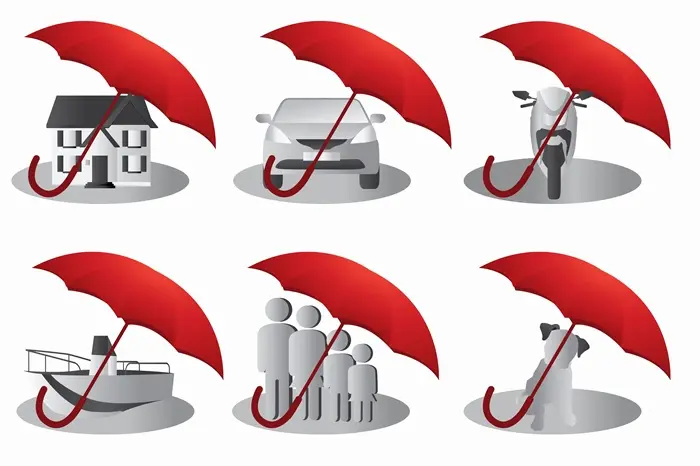Forex trading, also known as foreign exchange trading or currency trading, is the global market for buying and selling currencies. As one of the most liquid and active financial markets, forex offers traders the opportunity to profit from changes in the value of currencies. Understanding how forex trading works is essential for anyone considering getting involved in the world of trading, whether for investment purposes, speculation or hedging.
In this article, we will explore the fundamentals of forex trading, the different players in the market, the tools traders use, and the mechanisms that drive fluctuations in the value of currencies. Ultimately, you will have a solid understanding of the nature of forex trading and how it works.
Understanding Forex Trading
Forex trading involves exchanging one currency for another with the goal of profiting from changes in exchange rates. Currencies are traded in pairs, such as the Euro/US Dollar (EUR/USD) or the British Pound/Japanese Yen (GBP/JPY), where one currency is bought and another is sold at the same time.
Unlike the stock market, the forex market is decentralized, meaning there is no central exchange where all transactions take place. Instead, it operates on an over-the-counter (OTC) model, where transactions are made directly between two parties, usually through a broker or financial institution.
Due to the global nature of currency trading and the different time zones, the Forex market operates 24 hours a day, five days a week. This provides traders with the flexibility to trade at any time, making it ideal for traders seeking constant market activity.
The Role of Currency Pairs in Forex Trading
In Forex trading, currencies are always quoted in currency pairs. A currency pair consists of two currencies: a base currency and a quote currency. For example, in the EUR/USD (EUR) currency pair, the Euro (EUR) is the base currency and the U.S. Dollar (USD) is the quote currency. The price of the currency pair indicates how much of the quote currency you need to buy one unit of the base currency.
Major Currency Pairs
The most traded currency pairs are known as major currency pairs. These pairs include the U.S. Dollar (USD) against the Euro (EUR), Japanese Yen (JPY), British Pound (GBP), Swiss Franc (CHF), Canadian Dollar (CAD), and Australian Dollar (AUD). These currency pairs have the most liquidity and the smallest spreads, making them ideal for traders.
Minor and Exotic Pairs
Minor pairs are currency pairs that do not include the U.S. dollar, but include other major currencies such as the euro, pound or yen. Exotic pairs include a major currency and an emerging market currency, such as USD/TRY (US dollar/Turkish lira) or EUR/INR (Euro/Indian rupee). While these pairs can offer great profit opportunities, they also carry higher risks due to lower liquidity and wider spreads.
How Forex Trading Works
Trading Forex is essentially a bet on the future movement of a currency pair. If you think the base currency will strengthen relative to the quote currency, you might buy the pair; if you think the base currency will weaken, you might sell the pair.
The value of a currency is affected by a variety of factors, such as interest rates, economic data, geopolitical events, and market sentiment. Forex traders use different methods and strategies to analyze these factors and predict currency movements.
Spot Market
The spot market is the most straightforward way to trade Forex. It involves buying and selling currencies at current market prices, with trades being settled immediately. In the spot market, trades are usually completed within two business days, hence the name “spot” trade.
Forward and Futures Markets
The forward market allows traders to agree to buy or sell a currency at a predetermined price and date in the future. Unlike spot market transactions, forward contracts are custom agreements between two parties. Whereas futures contracts are standardized agreements traded on an exchange with a fixed contract size and settlement date.
Participants in the Forex Market
The Forex market consists of a number of key participants, each with different goals and roles. Understanding these players is essential to understanding how the market works.
Central Banks and Governments
Central banks, such as the Federal Reserve or the European Central Bank (ECB), play an important role in the foreign exchange market by setting monetary policies, including interest rates, that directly affect the value of currencies. Governments may also intervene in the foreign exchange market to stabilize the economy or control inflation.
Commercial Banks and Financial Institutions
Commercial banks are the main liquidity providers in the foreign exchange market. They provide currency exchange services to businesses, governments, and individual traders. Financial institutions also participate in foreign exchange trading as part of their investment strategy or to hedge against currency risk.
Retail Traders
Retail traders are individuals who trade foreign exchange through online brokers. They are often driven by profit potential and use leverage to magnify gains. Retail traders can trade on the same platforms as institutional investors, but their trading volumes are usually much smaller.
Hedge Funds and Speculators
Hedge funds and other institutional investors trade foreign exchange with the goal of profiting from short-term price fluctuations. These large institutions can influence the market by executing large trades based on market analysis, economic indicators, or geopolitical events.
Factors that influence currency prices
Currency prices are driven by a range of factors, which can be broadly categorized as economic and geopolitical.
Interest rates
One of the most important factors that influence currency values is interest rates. Higher interest rates tend to attract foreign capital, which causes the currency value to rise. Conversely, lower interest rates cause the currency to depreciate.
Economic indicators
Key economic indicators such as GDP growth, employment, inflation, and trade balance can provide a snapshot of a country’s economic health. Strong economic performance generally leads to a stronger currency, while weak economic data can cause a currency’s value to fall.
Geopolitical events
Geopolitical events, such as elections, trade wars, or natural disasters, can have a significant impact on currency prices. For example, political instability in a country can cause its currency to depreciate as investors seek safer assets.
Market sentiment
Market sentiment, or the general mood of the market, can also affect currency values. If traders are optimistic about a country’s economic or political situation, they may buy that country’s currency, driving up its value. Conversely, negative sentiment causes a currency to depreciate.
Forex Trading Tools and Strategies
Traders use a variety of tools and strategies to analyze the forex market and make informed trading decisions.
Technical Analysis
Technical analysis involves studying past market data (primarily price and volume) to identify patterns and trends. Traders use charts, indicators, and oscillators to predict future price movements. Common technical tools include moving averages, the relative strength index (RSI), and Bollinger Bands.
Fundamental Analysis
Fundamental analysis focuses on economic and political factors that affect the value of currencies. Traders use fundamental analysis to look at interest rates, inflation, employment reports, and other economic data to determine the future direction of currency pairs.
Leverage in Forex Trading
Leverage is an important feature of forex trading that allows traders to control larger positions with less capital. While leverage can magnify profits, it also increases the possibility of large losses. Traders must understand the risks of leverage and use it with caution.
How to start forex trading
Starting forex trading is relatively simple. The first step is to choose a reliable forex broker that provides access to the forex market. Brokers offer a variety of trading platforms, such as MetaTrader 4 (MT4) and MetaTrader 5 (MT5).
Next, traders need to open a trading account and deposit funds. Many brokers offer demo accounts, which allow beginners to practice trading with virtual money before investing real money.
Finally, traders should develop a trading plan that outlines their risk tolerance, trading strategy, and financial goals. It is also crucial to stay informed about the market and continuously improve your trading skills.
Conclusion
Forex trading offers traders a unique opportunity to profit from fluctuations in the value of currencies. With its 24-hour market, high liquidity, and the potential for lucrative returns, it is no surprise that forex trading has attracted millions of traders around the world.
However, forex trading also carries risks, and traders must have a deep understanding of the market, use appropriate risk management techniques, and stay abreast of global events that may affect currency prices.
By mastering the basics of forex trading and adopting a sound trading strategy, anyone can potentially profit from the dynamic world of currency trading. Whether you want to trade full-time or just want to dabble in the market, forex trading offers exciting opportunities for those willing to put in the effort.
Related topics:

































